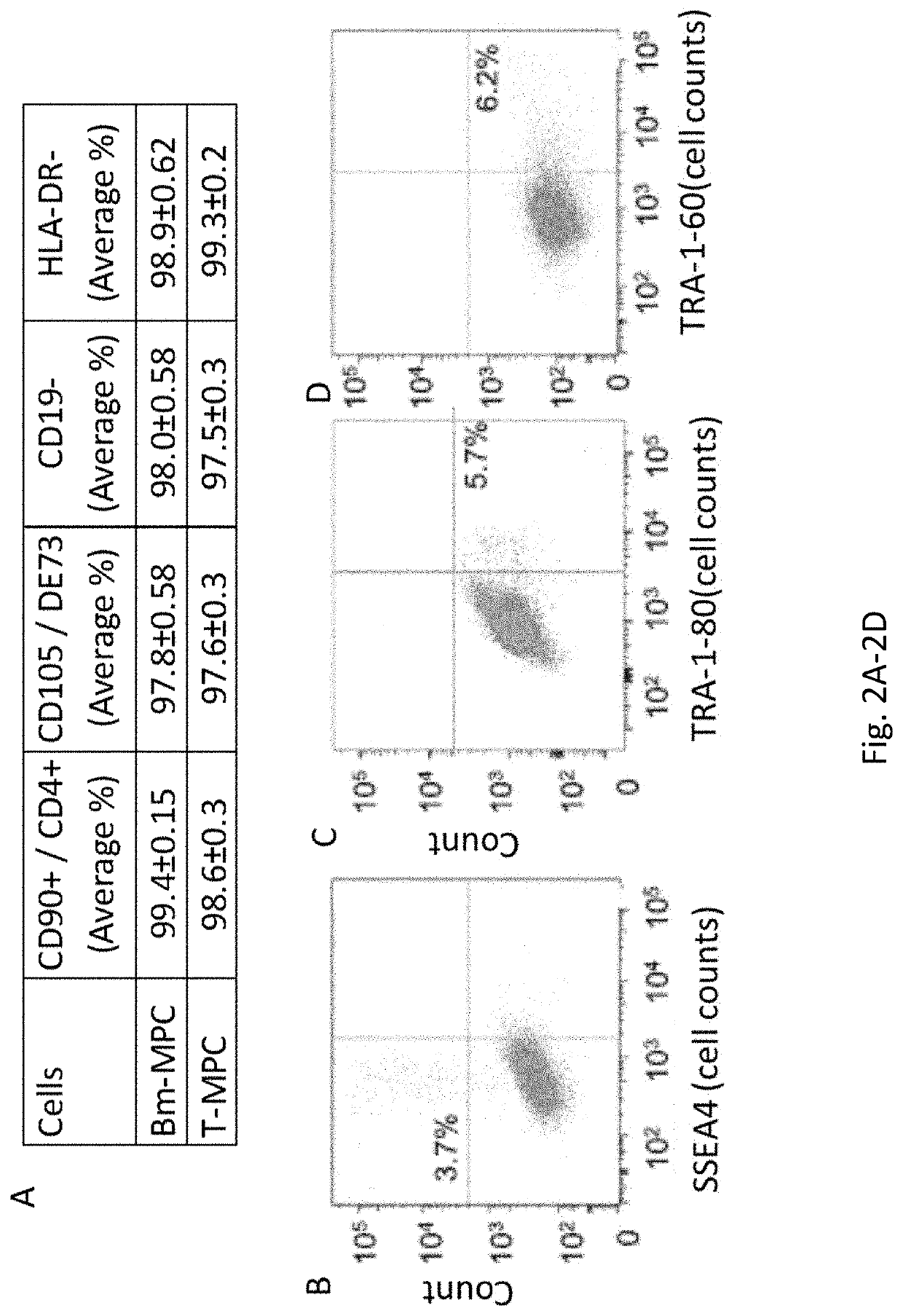Methods for generating multipotent stem cells from tonsillar biopsies
a technology of tonsillar biopsies and stem cells, which is applied in the direction of skeletal/connective tissue cells, prostheses, unknown materials, etc., can solve the problems of considerable donor morbidity, pain and bleeding, and inability to obtain stem cells from patients and healthy donors
- Summary
- Abstract
- Description
- Claims
- Application Information
AI Technical Summary
Benefits of technology
Problems solved by technology
Method used
Image
Examples
experimental examples
[0152]The invention is further described in detail by reference to the following experimental examples. These examples are provided for purposes of illustration only, and are not intended to be limiting unless otherwise specified. Thus, the invention should in no way be construed as being limited to the following examples, but rather, should be construed to encompass any and all variations which become evident as a result of the teaching provided herein.
[0153]Without further description, it is believed that one of ordinary skill in the art can, using the preceding description and the following illustrative examples, make and utilize the compounds of the present invention and practice the claimed methods. The following working examples describe embodiments of the present invention, and are not to be construed as limiting in any way the remainder of the disclosure.
example 1
Protocol for the Generation of Human Tonsillar Stem Cells
[0154]Tonsils retrieved from tonsillectomy procedures have shown to be a good source of MPCs (Janjanin et al., (2008) Arthritis Res Ther 10:R83). However, tissues harvested from healthy donors would be preferable as a reliable source of stem cells. To this end a procedure was developed to generate highly proliferative multipotent stem cells from a small fragment of normal tonsillar tissue. Tonsils are lymphoid tissue anatomically located at the entrance of pharynx. Tonsillar tissues retrieved from tonsillectomy procedures were shown to be a good source of MPCs (Janjanin et al., (2008) Arthritis Res Ther 10:R83). However, for translational purposes, cells that can be retrieved from healthy donors without the risk of major complications and donor morbidity are preferred as a reliable source for stem cells. Here a novel procedure for the isolation of MPCs from a biopsy-sized sample of a human tonsil is reported. Tonsillar MPCs (T...
example 2
nt Progenitor Cells from Human Tonsils
[0184]Human adult multipotent progenitor cells (MPCs) hold the potential for the treatment of numerous conditions and degenerative diseases. MPCs possess major advantages over both embryonic stem (ES) cells and induced pluripotent stem (iPS), as they can be derived from donors at any age, and therefore pose no ethical concerns or risk of teratoma tumor formation in vivo. Furthermore, they have a natural ability to differentiate and secrete factors that promote tissue healing without genetic manipulation. However, at present, clinical applications of MPCs are limited by a shortage of a reliable, standardized and easily assessable tissue source, which does not rely on specimen discarded from unrelated surgical procedures.
[0185]Here it is demonstrated that highly proliferative tonsillar MPCs (T-MPCs) can be harvested from a very small fragment of tonsillar tissue. This procedure provides a robust yield of tonsillar MPCs, which can be obtained in a ...
PUM
 Login to View More
Login to View More Abstract
Description
Claims
Application Information
 Login to View More
Login to View More - R&D
- Intellectual Property
- Life Sciences
- Materials
- Tech Scout
- Unparalleled Data Quality
- Higher Quality Content
- 60% Fewer Hallucinations
Browse by: Latest US Patents, China's latest patents, Technical Efficacy Thesaurus, Application Domain, Technology Topic, Popular Technical Reports.
© 2025 PatSnap. All rights reserved.Legal|Privacy policy|Modern Slavery Act Transparency Statement|Sitemap|About US| Contact US: help@patsnap.com



